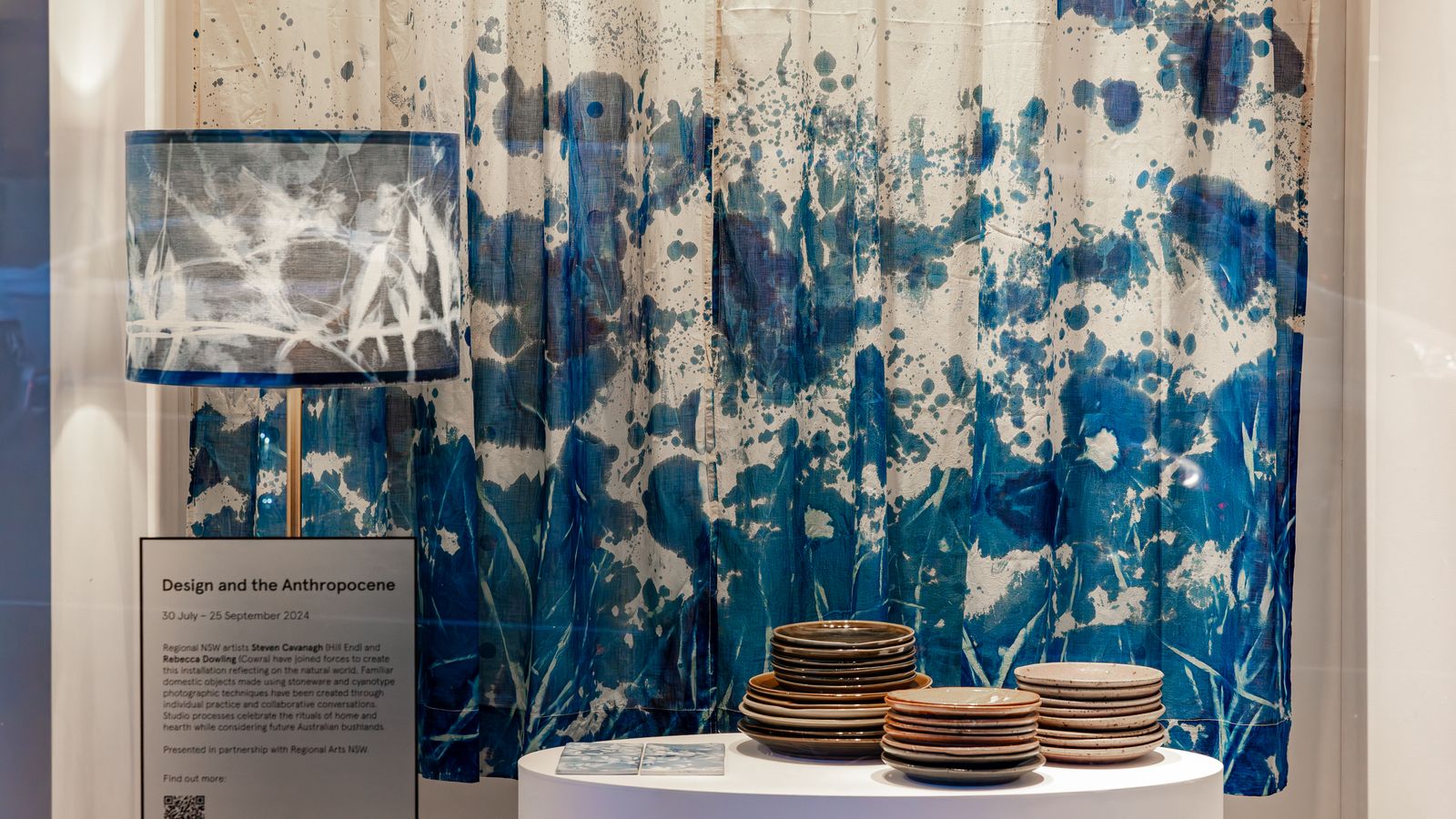ADC x Regional Arts NSW Collaboration

Australian Design Centre and Regional Arts NSW have developed a partnership in 2024 and 2025 to enable designer makers from regional NSW to exhibit their work in Sydney in ADC's Object Space Window Gallery on William Street.
ADC CEO and Artistic Director Lisa Cahill asked Regional Arts NSW CEO Dr Tracey Callinan OAM a few questions about this partnership project and how important it is for artists and audiences.
Lisa: What is RANSW and how does it support regional artists?
Tracey: Regional Arts NSW is the peak body supporting regional arts practice in NSW. We were established in 1946, so we’re almost 80 years old. While our main focus is on the parts of NSW that don’t include the major cities of Sydney, Newcastle and Wollongong as well as the Central Coast, we are interested in everything happening outside Sydney in the regions. We also support metropolitan companies and artists to connect to the regions through collaborations, sharing and touring. Our support covers all artforms such as music, dance, theatre, visual arts, writing and screen work, but we also cover museums and heritage as well as the creative industries in areas such as design.
Lisa: Can you explain how the RADO network works?
Tracey: RADOs – Regional Arts Development Organisations – making up a network of 15 on-the-ground organisations, have been established over many years to ensure that creative practitioners and organisations have local support to assist them. NSW has a model unlike any other Australian state, with each of the RADOs being an independently constituted body with the ability to make their own decisions about what matters most in their areas. They receive funding from the NSW Government through Create NSW and also from beneficial relationships with councils in their area who contribute financially. They are both service organisations – working to support the arts and culture ecosystem of their region – and producing organisations who deliver a range of strategic projects to further the position of arts and culture. Regional Arts NSW works closely with this network to support the work they do.
Q. Supporting the arts in the regions is critical but how do you help regional artists to advance their career in Sydney and beyond?
Tracey: Getting recognition beyond their local area can be challenging for regional artists. Distance and isolation remain barriers and it is difficult to get work critiques and publicised more widely. Fortunately these factors are mitigated by many positives in the region including connection to place and community. Regional Arts NSW is seeking to offer more opportunity to regional artists to share their practice widely and have their work seen. We are building partnerships to achieve this, with Australian Design Centre being one of the first and most significant of these opportunities, showing work all year round of regional artists in their prominent windows in their William Street location in Darlinghurst. We are also building international residencies for regional artists, working to create a team of regional writers who can critique work made in the regions and build a range of platforms that tell the story of creative practice in regional NSW.
Lisa: The arts by nature is diverse and I know that the arts across regional NSW is as diverse as the regions themselves. What are three things you think characterises regional artists that Sydney audiences might find surprising?
Tracey: Firstly, I would say the innovation and quality that exists in the region may be surprising to some. While many would be aware of the strengths we have in traditional handmade product in the regions, Sydney-siders would be less expectant to see the depth of contemporary design and artwork that is also happening across so many areas from fashion to digital screen work.
Secondly I would say that place does matter. Being located in a regional place affects the making of work, and the sense of place becomes a major factor in shaping the products that come from regional Australia. Whether it is the deep knowledge and respect that First Nations have from being on country to artists that have discovered new places, it is difficult to work in a regional place and not be influenced in some way by the place and its people.
Thirdly, the regions are full of people with amazing backgrounds and experience. Everywhere I go in regional places I find people who have had successful careers around the world but have chosen at some point in their lives to head to the country. Regional people do not necessarily need their city counterparts to come and teach them how to do things; often that expertise is already there. But regional creatives are open to sharing their knowledge and learning from others, if you just take some time to find them, listen well and respect each other.
Lisa: What do you hope will be achieved through this partnership with ADC for the artists?
Tracey: I would hope that the work of regional artists is seen and that the ability of these artists is recognised. I hope that people seeing the ADC windows get a sense that creativity sits in places right across Australia, not just in the major cities. I hope too that the process raises awareness for artists in the regions of ADC’s work and the profiling of amazing design work.
Lisa: What else do you think artists located in regional areas need to find new audiences and markets for their work?
Tracey: People need to write about regional work, talk about regional work and gain more access to experiencing regional work. I would like there to be an increased sense of exchange between metropolitan and regional areas, so that it does not feel like one-way traffic. Expectations about regional work need to change, and artists need to find easier pathways to sharing their work. The partnership between Australian Design Centre and Regional Arts NSW is helping to make these things happen.
